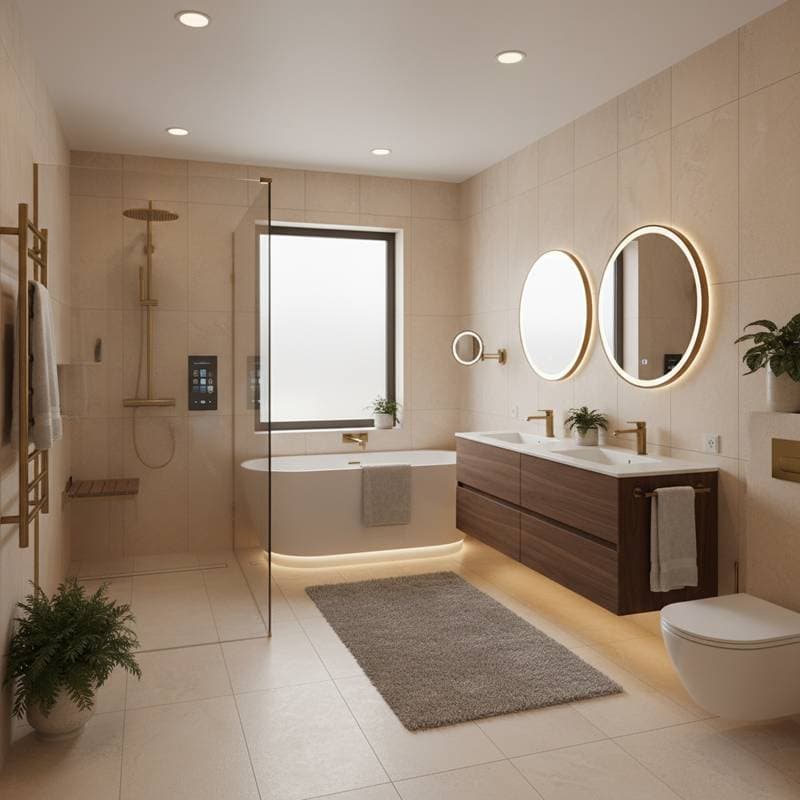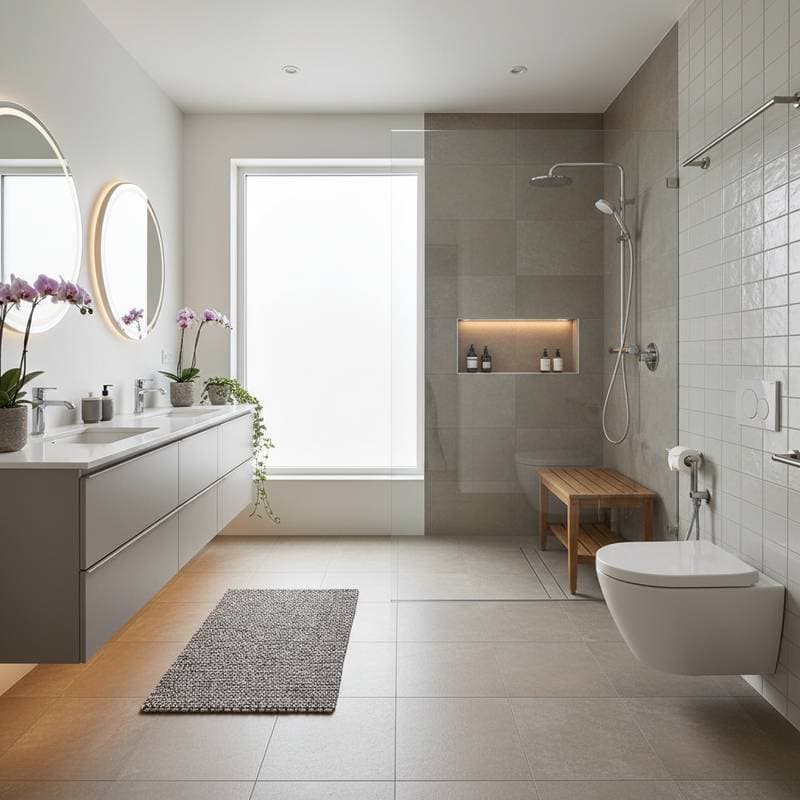Wet Rooms: The Future of Doorless Luxury Showers
Bathrooms serve as sanctuaries in daily life, where architecture intersects with personal rituals in subtle luxury. The emergence of wet rooms signals a move toward integrated design, dissolving divisions between shower areas, floors, and walls to form a unified space. Without doors or barriers, these rooms foster an environment of openness, tranquility, and smooth movement.
Understanding the Core of a Wet Room
A wet room functions as a completely waterproofed area that incorporates the shower directly into the bathroom's overall layout. The floor features a subtle slope leading to a hidden drain, which guides water away while preserving a streamlined appearance. Rather than isolating the shower, the entire room participates in the bathing process. This approach elevates utility into sensory immersion, delivering a spa-inspired atmosphere that feels expansive and natural.
Embracing the Doorless Approach
Doorless showers extend beyond mere aesthetics; they eliminate visual obstructions and promote unity among materials. Without glass enclosures or hardware, attention shifts to elements such as natural stone, ceramic tiles, and strategic illumination. The outcome is an enlarged, harmonious setting. Interior designer Sophie Linton of Atelier Linton notes, "When there are no doors, the materials take center stage. The space becomes a single composition rather than a collection of parts."
Selecting Materials for Contemporary Wet Rooms
Choices in materials prove essential for both performance and style. Designers prefer large-format porcelain tiles and microcement for their resilience and uniform surfaces. Caesarstone's Cloudburst Concrete provides a gentle matte finish suitable for countertops, while Fired Earth's Palazzo Grey Limestone adds subtle depth and warmth to floors. European oak, finished with moisture-resistant treatments, works well for integrated shelves or seating, blending the solidity of stone with the warmth of wood in refined settings.
Harnessing Color and Light
Colors shape the emotional tone and spatial feel of a wet room. Neutral shades such as Farrow & Ball's Skimming Stone or Benjamin Moore's Balboa Mist diffuse light softly to amplify openness. Deeper options like graphite or charcoal introduce coziness, particularly alongside brushed brass accents. For lighting, recessed fixtures or those hidden in ceiling edges simulate natural daylight. LED accents positioned behind mirrors or beneath vanities produce gentle glows that illuminate the area from multiple angles.
Integrating Drains as Design Elements
Drainage systems have progressed from basic utilities to aesthetic contributors. Linear options, such as the Infinity Drain S-L Series, integrate seamlessly with floor patterns for a discreet presence. Custom grates in finishes like antique bronze or satin nickel align with other fixtures. Strategic drain placement enhances the room's layout: a centered linear drain reinforces balance, whereas an offset version introduces organic flow. These choices refine the room's overall form and function.
Ensuring Technical Excellence
Precision engineering underpins the calm aesthetic of every wet room. Essential components include accurate floor gradients, impermeable membranes, and radiant heating systems. HydroSeal Systems offers advanced waterproofing solutions that safeguard against water seepage and promote durability. Builders work alongside architects to achieve the precise incline without disrupting level entries. Such foundational elements enable the surface-level sophistication.
Drawing from Spa Inspirations
High-end hotels and wellness centers shape the evolution of home wet rooms, aiming to capture their restorative essence. Professionals like Tobias Grey of Grey Studio Architecture reference Japanese onsen concepts, where bathing forms a deliberate, immersive practice. Emphasis falls on understated details: balanced proportions, tactile surfaces, and diffused lighting. Acoustic softening, heated floors, and ambient glows together soothe the senses in a domestic context.
Promoting Accessibility for All
Wet rooms excel in inclusivity through their barrier-free construction, accommodating diverse needs across life stages. Studio Ardent, with its focus on user-centric design, incorporates textured non-slip porcelain that prioritizes safety alongside elegance. Level entries ease maintenance and broaden practical use. This thoughtful integration demonstrates how utility enhances rather than detracts from refined beauty.
Advancing Sustainability in Design
Eco-conscious practices now guide wet room creation, emphasizing efficient resources and ethical materials. Fixtures like Grohe's SmartControl regulate water usage and temperature for optimal conservation. Options such as recycled glass tiles or terrazzo from reclaimed materials add visual interest with minimal ecological footprint. Durable selections extend the space's life, minimizing replacements and supporting long-term environmental responsibility.
Envisioning the Next Era of Bathing Spaces
Architects increasingly position wet rooms as central features in private areas, often highlighted by curved partitions or overhead natural light. Some designs merge bathing zones with adjacent dressing spaces, using material shifts or illumination to define transitions. This seamless connectivity mirrors wider shifts toward adaptable living environments, where divisions fade to support fluid routines.
Maintaining and Evolving Your Wet Room
Daily interaction gradually infuses a wet room with character, as surfaces acquire a subtle patina that deepens its appeal. Select materials that develop gracefully over time and pair them with adjustable lighting to suit varying atmospheres. Periodic sealing of natural stones and consistent airflow preserve the space's integrity. Incorporate organic touches, such as wooden benches, fiber containers, and soft fabrics, to balance the structured lines.
Wet rooms transcend passing styles by fulfilling a fundamental need for uncluttered, restorative environments. The interplay of water, texture, and illumination nurtures mental and physical equilibrium. Homeowners embarking on updates might begin with threshold modifications or expansive tiling. Full transformations, complete with unified waterproofing and heated surfaces, yield profound daily indulgence. In each case, the focus remains on harmonizing form with the intimate rhythm of personal care.










